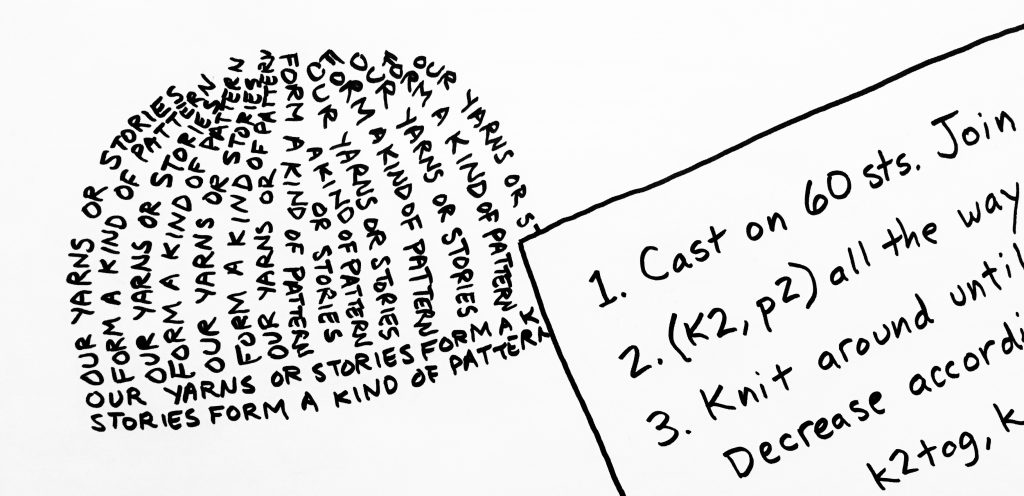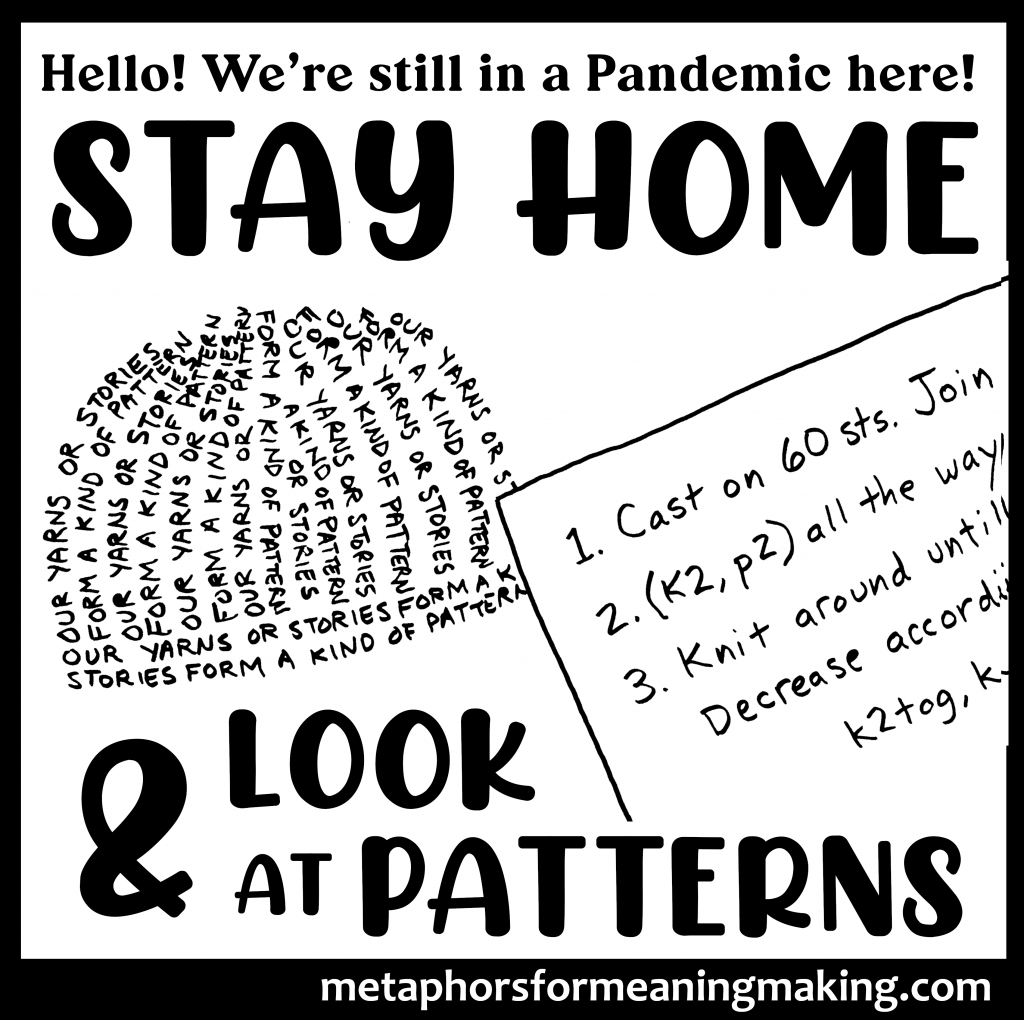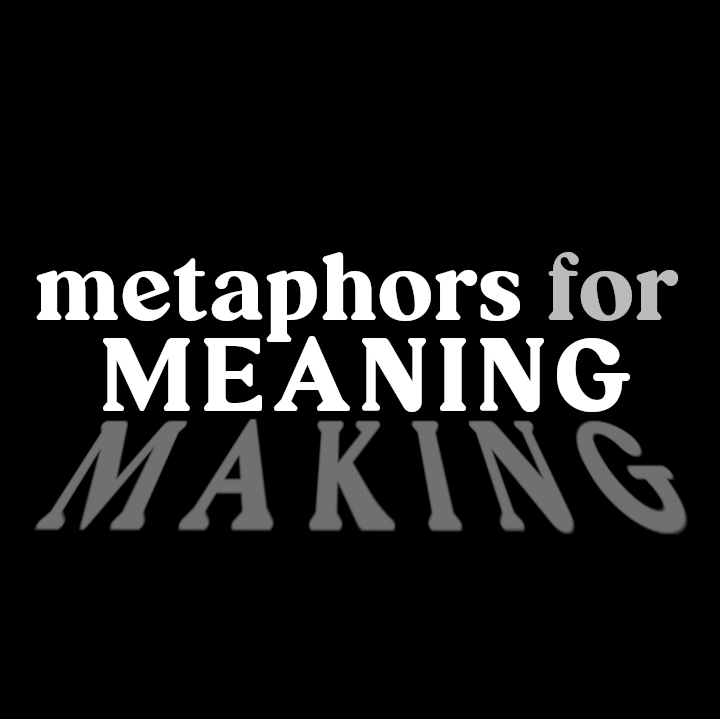Part of the Crafting a Better World series
Hello! We’re still in a pandemic here,
so stay home and LOOK AT PATTERNS!
STAY HOME AND LOOK AT PATTERNS
I have fond memories spent in fabric stores as a kid leafing through the sewing pattern books with my mom. More recently rabbit hole of pattern seeking’s been online on awesome sites like Ravelry. But the patterns I’m wanting to look at aren’t in magazines or Look Books. They don’t come as digital download pdfs. They are the patterns in and around us.
Before the pandemic, when my yarn shop was open to people coming in, I found that a lot of crafters were often really stuck and not feeling the freedom to be creative.
In my shop, people usually came in because they had made a mistake and didn’t know how to fix it. And they were completely immobilized by that need. Like with everything, you can tell a lot about a person when they start to tell their stories. Usually folks fell into two groups.
The first group had these kinds of things to say:
- There’s something WRONG with me!
- Why can’t I do this!?! I just don’t understand!
- It’s broken and I can’t fix it!
A lot of messages turned inward.
The second group had these kinds of things to say:
- Something is wrong with this yarn! It just doesn’t form stitches right.
- I don’t think the person who wrote this pattern knew what they were doing!
And still: - It’s broken and I can’t fix it!
This is really the heart of being a craft store owner which inevitably has less to do with the project in someone’s hands and more to do with whatever’s going on within their minds.
We all have yarns–stories–that we tell ourselves–and they often follow the narratives of these two kinds of crafters: I’m bad and can’t get anything right. OR I’m good; nothing is wrong with me, but something is wrong with everything and everyone else. These are two stories that many of us walk around with.
And these yarns, or stories, really form a kind of pattern.
If I blame myself for everything then I’m always judging myself; always seeking a perfection I can’t ever reasonably fulfill; I’m always disappointed. I probably often find myself in an immobilizing shame spiral. My internal story might even lead me towards depression. Or it could lead me towards being an angry person. Or a dissatisfied person. Certainly my story doesn’t make me happy.
If I blame everyone and everything else for everything then I’m also seeking a perfection I–and everyone else–can’t ever reasonably fulfill. And I’m certainly not taking responsibility for anything. I’m still likely always disappointed. I probably come across as judgey and self-righteous. I’m probably still a really dissatisfied person. Certainly my story doesn’t make me happy.
These crafters may have been following instructions or “patterns” in their projects, but the patterns that were actually feeding their inability to deal with the snags they encountered were not on the page, but inside themselves. Our personal narratives can be like patterns, tapes in our heads, that lead us down the same path, again and again. Blaming others or blaming ourselves. And either way, not actually solving the problem.
The advice I tend to give crafters is pretty adaptable to other life situations:
- first, let go of assuming you made a mistake or that someone else did; just let go of all the “blech” associated with mistakes altogether and instead get into the mindset of a detective: retrace your steps; lean into curiosity. Do some research. Ask questions.
- check in with others you trust who might have more experience or a different perspective
- Once you have gleaned more wisdom and perspective, then you hopefully have a better sense of what you are really dealing with; and you can make a more informed decision about what you need to do next..
It’s easy to get stuck in repetitive patterns that can be super harmful to ourselves and others. These patterns form the stories we tell about ourselves, for good or bad. They inform who we are and how we treat one another. But we can change our story. We can knit our story together with others. We can see how the patterns repeat, how they may need to be unraveled or rewoven together in new ways. We can craft a better world when we take the time to see the patterns that are harmful and work together to design something new.

Possible Questions to explore:
(for fun) If you were to visualize the “pattern” of your life or your personality what kind of pattern would it be? intricately woven? colorful? sparkly? polka dotted? striped? plaid? What does your pattern say about you? What kind of pattern would you imagine for other people or institutions in your life?
Do you identify with one of the two crafters talked about (either blaming self or blaming others)? Where do you think that mindset came from? How has it harmed you or others? Do you think it’s possible to break that pattern?
Do you have another kind of pattern you are stuck in that is keeping you from engaging in crafting a better world for all?
What people can you turn to who have more experience and/or different perspectives to bring? These could be actual people in your life or community you can talk to, and/or may include books, stories, podcasts — other voices that can inform your understanding.

